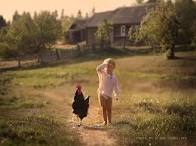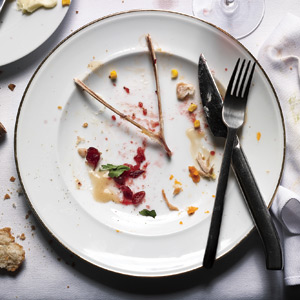By Mayra Miranda
Sally Ray loved hamburgers, pizza, fried chicken, potato chips and all yummy food! She also ate all her fruits and veggies and lived in her family’s farm cottage. She was young …very young, in fact. She was unaware of how the world works. She didn’t know anything, and maybe it was for the best.
She deeply loved to play with her friends: Diane the cow, Nibbler the pig, Henry the chicken, Matilda the duck, Albert the turkey, and Jelly, the dog. They all lived peacefully on acres of uniform grassland. Suddenly, she began to notice her friends would disappear, and weren’t there the next day. She would make inquiries about this to her parents. They would respond that her friends were in “a happy place” and that everything would be fine. But it wasn’t okay as she grew older. A feeling of guilt and emptiness started to rise as Sally realized that the disappearance of Henry, Matilda, and Albert wasn’t a mere coincidence.
One night, she heard a squeal coming from the backyard. It intensified,as she covered her ears with a pillow until the squealing stopped. From that night, she finally understood the destiny of her friends. The next morning, the smell of sizzling bacon woke her up. She immediately ran towards the barn to find Nibbler, but he wasn’t there. It proved her theory when she came out of the barn and saw a trail of blood leading to a shed. Sally Ray opened the shed door and screamed.
Sally ran into the kitchen to find her mom and sought consolation. Ms. Ray asked Sally what was wrong but Sally didn’t immediately reply.
“Darling, you know what ought to cheer you up?,” her mother said. “Some good old bacon ‘n’ eggs.” Then she offered Sally a big shiny plate of breakfast, accompanied by a glass of creamy cow mammary gland secretions.
She tried to resist it at first. However, inevitably, the smell of the crispy bacon overcame the remorse she was feeling. Sally kept wondering why she did it, but nevertheless, Sally reverted to her old oblivious self and never looked back. New friends would come and go, and their disappearance became habitual. As time progressed, her connection with nature abated into nothingness.
As she grew up she would go into grocery stores that sold animal corpses. She didn’t think about how they’d been deprived of their freedom, killed, and their bodies cut into pieces for the butcher shop. It was tradition! Culture! But culture is not always sane and healthy! What happened? She had been so blissful when she was younger, now her guilt was eating her up. Her love of food was distorted into something she didn’t think it was possible. Her friends tasted so delicious that temptation got the best of her.
She wanted to stop but she couldn’t. Why? She lost a little bit of her humanity in order to commit these atrocious acts. Even though she knew that she could have stopped, she kept eating her friends. The only time she felt worse was when she killed her 20-year-old friend, Diane the cow.
Poor Diane, her eyes were full of confusion at how Sally could shoot her with a rifle. The only animal exempted from Sally’s madness was Jelly the dog. How could she eat a dog? That would be disgusting! But Sally could eat Henry, Matilda, Albert, Diane and Nibbler without anyone looking at her differently. It was considered tradition! Her friends had lived a happy life until their final day…that must mean it’s okay to eat them! They didn’t suffer until the very end. But how can you humanely kill someone who doesn’t want to die?
Oh, but her hamburger, her bacon… how could Sally possibly live without them? She needed to eat her friends to survive! She told herself It was a necessity to do these things, and besides, it’s completely legal, so it must be morally justified. She grew up with this habit of eating her “friends” and for some reason she always found a way to justify it just like her parents had. But something was still wrong. Because she couldn’t find happiness. Deep inside she still didn’t believe it was possible to take life away from happy animals “humanely,” or that it was morally acceptable to kill anyone who didn’t want to die.


